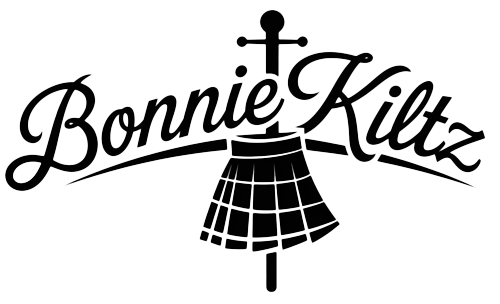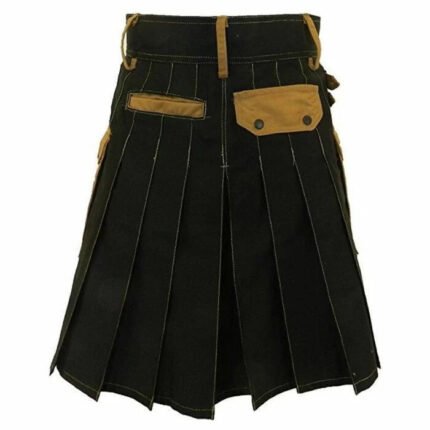At Bonnie Kilts, we celebrate the rich heritage and timeless appeal of traditional kilts. Originating from Scotland, the kilt is a knee-length garment adorned with distinctive tartan patterns, each representing unique clans and histories. Our collection showcases handcrafted kilts made from high-quality wool, ensuring durability and comfort for every occasion.
Whether you’re attending a formal event, a wedding, or enjoying a casual outing, our traditional kilts can be styled to suit any setting. We offer customization options to help you find the perfect fit and design that honors your heritage.
Explore our range of traditional kilts today and wear your story with pride.
Traditional Kilts: A Timeless Piece of Heritage
Introduction to Traditional Kilts
The traditional kilt is more than just a piece of clothing; it embodies a rich history and cultural significance. Originating from Scotland, the kilt is a knee-length skirt-like garment with pleats at the back, made from tartan or patterned woolen fabric. Traditionally worn by men, the kilt has evolved into a versatile fashion statement suitable for various occasions. At Bonnie Kilts, we celebrate the timeless appeal of traditional kilts, offering a wide range of options for everyone who wishes to honor this iconic attire.
The Historical Significance of Kilts
Kilts have been worn in Scotland since the 16th century, with roots tracing back to ancient Celtic garments. The earliest forms of the kilt, known as the "great kilt" or "belted plaid," consisted of a long piece of cloth wrapped around the body and secured with a belt. This garment was practical, allowing for ease of movement while providing warmth in the rugged Scottish Highlands.
The kilt has become a symbol of Scottish heritage, representing not only the nation's history but also its clans and families. Different tartans signify different clans, allowing wearers to showcase their ancestral roots. This connection to heritage is a significant reason many individuals choose to wear traditional kilts today.
The Craftsmanship Behind Traditional Kilts
At Bonnie Kilts, we pride ourselves on the craftsmanship that goes into creating each traditional kilt. Our kilts are made from high-quality materials, ensuring durability and comfort. The process begins with selecting the finest wool and tartan patterns, reflecting authentic Scottish designs.
Handcrafted Excellence
Every kilt is meticulously handcrafted by skilled artisans who pay close attention to detail. From the precise stitching to the pleating and finishing touches, our kilts are designed to provide the perfect fit and aesthetic appeal. This dedication to craftsmanship not only enhances the quality of the garment but also preserves the traditional methods that have been passed down through generations.
Customization Options
We understand that each individual has unique preferences when it comes to style and fit. That’s why we offer customization options for our traditional kilts. Customers can choose from a variety of tartans, lengths, and additional features such as pockets, lining, and more. This level of personalization ensures that your kilt not only reflects your heritage but also meets your specific needs.
Choosing the Right Traditional Kilt
When selecting a traditional kilt, there are several factors to consider:
1. Tartan Patterns
The tartan pattern is perhaps the most defining characteristic of a kilt. At Bonnie Kilts, we offer an extensive selection of tartans, each representing different clans and regions. Whether you’re looking to honor your family lineage or simply prefer a particular design, our diverse range ensures you’ll find the perfect tartan.
2. Size and Fit
A well-fitting kilt is essential for comfort and style. Our kilts come in various sizes, and we provide a detailed size guide to help you choose the best fit. For those who require a custom size, our bespoke service ensures that your kilt will fit like a glove.
3. Occasion
Consider the occasion for which you’re purchasing the kilt. Traditional kilts are versatile and can be worn for various events, including weddings, formal gatherings, and casual outings. For formal occasions, consider pairing your kilt with a matching jacket and accessories, while a more relaxed setting may call for a simple shirt and sporran.
Styling Your Traditional Kilt
The traditional kilt is a versatile garment that can be styled in numerous ways. Here are some tips on how to wear and accessorize your kilt for different occasions:
1. Formal Events
For weddings, galas, or formal gatherings, elevate your traditional kilt with the right accessories. Pair your kilt with a tailored jacket, such as a Prince Charlie or a Tweed jacket. A crisp white shirt and a tie or cravat will complete the look. Don’t forget to add a sporran, a traditional pouch worn at the front of the kilt, which adds both style and practicality.
2. Casual Wear
For a more laid-back look, you can wear your traditional kilt with a simple T-shirt or polo shirt. Opt for comfortable footwear, like loafers or casual shoes, to keep the outfit relaxed yet stylish. This combination is perfect for social gatherings, festivals, or casual outings with friends.
3. Seasonal Styling
Kilts can be worn year-round, but styling may vary depending on the season. In colder months, layer your kilt with tights or thermal leggings for added warmth. Pair it with a cozy sweater or jacket for a comfortable winter look. In the summer, a lightweight shirt and sandals can create a breezy outfit that showcases your kilt's vibrant tartan.
Caring for Your Traditional Kilt
To maintain the quality and longevity of your traditional kilt, proper care is essential. Here are some tips for keeping your kilt in top condition:
1. Washing Instructions
Always check the care label for specific washing instructions. Most traditional kilts can be dry cleaned to preserve the fabric and tartan pattern. If you must wash it at home, use cold water and a gentle detergent. Avoid bleach and fabric softeners, as they can damage the wool fibers.
2. Storage
When not in use, store your kilt in a cool, dry place. Hanging your kilt on a sturdy hanger will help maintain its shape. Avoid folding it for long periods, as this can cause creases that may be difficult to remove.
3. Regular Inspections
Periodically inspect your kilt for any signs of wear and tear. If you notice loose threads or seams, address them promptly to prevent further damage. Regular maintenance ensures that your kilt remains a cherished piece of clothing for years to come.
The Cultural Impact of Traditional Kilts
Traditional kilts are not only significant in Scottish culture but have also made their mark on fashion worldwide. In recent years, the kilt has transcended its traditional roots, becoming a symbol of individuality and style. Designers have embraced the kilt, incorporating it into modern fashion trends, and celebrities have been seen donning this iconic garment on various occasions.
The resurgence of interest in traditional kilts has also led to their acceptance in various social settings, including themed events, music festivals, and even as everyday wear. This evolving perception has contributed to the kilt's status as a versatile garment that resonates with people from all walks of life.
Conclusion: Embrace the Tradition
At Bonnie Kilts, we celebrate the legacy of traditional kilts and invite you to explore our diverse collection. Whether you’re looking to honor your heritage, make a fashion statement, or simply enjoy the comfort and style of a kilt, we have something for everyone. With our commitment to quality craftsmanship and customization, you can find the perfect traditional kilt that reflects your unique identity.
























